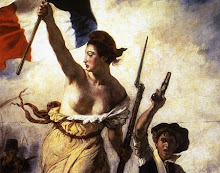A force for good, now
Sep 25th 2008 | SANTIAGO
From The Economist print edition
A newly streamlined army polishes its democratic credentials
TEN years after General Augusto Pinochet stepped down as commander-in-chief, Chile’s army is at last emerging from the shadow of its murky past. For a quarter of a century it laboured under the baleful influence of the man who came to power in a military coup in 1973, its once proud reputation sullied by the blood of thousands of innocents tortured and murdered under his 17-year dictatorship. The army was unable to start reforming itself until he finally stepped down as its leader another eight years later.
Despite hundreds of court cases (though few convictions so far), many questions about the army’s role in the human-rights abuses remain unanswered. The remains of some 3,000 people killed or “disappeared” by the regime have never been found. Many Chileans still wonder how such a highly disciplined force could have resorted to such appalling violence. “There is a weight of history,” admits José Goñi, Chile’s defence minister. “But the new generation doesn’t have to be held responsible.” Only six of those in the army at the time of the 1973 coup remain in service.
General Óscar Izurieta, the army’s commander, says that the army will not be accepted fully as part of democratic society until questions over its past can finally be laid to rest. The courts have to do their job, he agrees, and it is legitimate for people who suffered at the army’s hands to want to keep the issue open. “But I don’t know if it’s good for them or the country,” he says. “Every day, they put me face to face with a problem of the past.”
The army has tried hard to regain legitimacy over the past decade. It has seized on natural disasters, such as earthquakes, to play an active civil-defence role. It has used its field hospitals to take medical services to remote areas and help the national health service cut waiting lists. And it has sought to reduce its social isolation by such measures as sending cadets from the Santiago military academy to one of the city’s universities for some of their courses.
Some of the excess fat has been shed, too. Currently 40,000-strong, down from around 70,000 in the mid-1990s under Pinochet’s command, it is leaner and more professional. Unpaid military service has been scaled down and, unlike General Pinochet’s conscript-packed army, all national-service places are now filled by volunteers. And under a law passed by Congress this summer their number will drop even further as they are gradually replaced by professional soldiers.
Thanks to record prices for copper, Chile’s main export, and an odd arrangement (predating Mr Pinochet) under which Codelco, the state copper producer, transfers 10% of its export revenues (amounting to $1.4 billion last year) to the armed forces for capital expenditure, there has been money to spend. The finance ministry has the last word, but the army has been able to shop extensively, with acquisitions including German tanks and better electronics. Today, Chile’s is the most modern and best-equipped army in Latin America, says Armen Kouyoumdjian, an adviser to the Stockholm International Peace Research Institute.
But what exactly does the country need such an army for? In the 1970s Chile faced a real threat of war with Argentina and Peru, but relations with both have improved a lot since then. Indeed, Chile’s military ties with Argentina are so close that the two countries have created a joint standby unit for international operations. Although political instability in Bolivia is a worry, the main risk to Chile from that direction—an exodus of Bolivian refugees—is hardly a military problem. On the other hand, having a strong army may help to ensure that relations with Peru stay peaceful. Chile and Peru have had a long-standing dispute over maritime borders, and Ollanta Humala, the Peruvian populist who almost won his country’s most recent presidential election, found it convenient to stir up sentiment against Chile.
For its part, the army emphasises that it is available for international peacekeeping. It is already part of the United Nations force in Haiti—its first significant peacekeeping role. Some Chileans reckon that the army is still bigger than necessary for a peaceful country of only 16m people. But a rational plan for slimming should be based on the needs of the future, not the misdeeds of the past.


